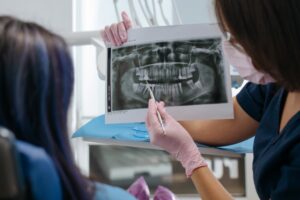 Prevention is key to saving yourself time, money, and future health problems
Prevention is key to saving yourself time, money, and future health problems
Visiting the dentist isn’t just about checking on the condition of your teeth and gums. It can benefit your overall well-being, too. After all, the mouth and body are connected.
Research from the Mayo Clinic shows poor oral hygiene can contribute to certain diseases, such as endocarditis, cardiovascular disease, pregnancy and birth complications, and pneumonia.
The Dental Medical Convergence works to educate families, dentists, and physicians about the link between oral care and overall wellness.
Importance of Regular Dental Visits
Visiting the dentist regularly — many recommend every six months — offers more benefits than you might expect.
A dentist can spot early signs of gum disease or oral infections. They can then refer you to a physician for further care.
Many times these conditions have no pain, so you might not realize you have a health problem. It’s important to address oral health conditions before they get worse.
An infection in the mouth can spread to other parts of the body and lead to bigger health problems.
The Role of Your Dentist in Oral Health
A dentist will monitor the health of your teeth and gums, screen you for oral cancer, and pay attention to any signs of gum disease.
A dentist will also help you identify the right method of cleaning your mouth based on your oral health. Dentists may encourage some patients to add an extra teeth cleaning to their regime – three cleanings a year instead of two.
We recommend you discuss the condition of your mouth with your physician as well. Opening the communication lines between dentists and physicians will greatly improve patient well-being. If a medical condition is connected to a dental issue, then all healthcare professionals should be discussing the best ways to treat the problem.
You can download this free PDF explaining the five questions you should ask your dentist. It includes a care checklist that you have your dentist fill out then give to your primary care physician.
This is a great way to ensure your oral and overall wellness remain connected.
